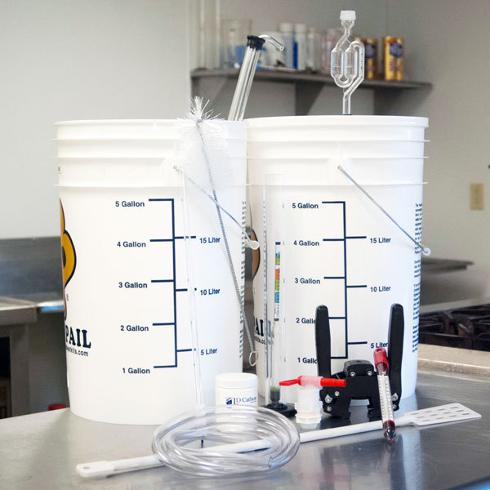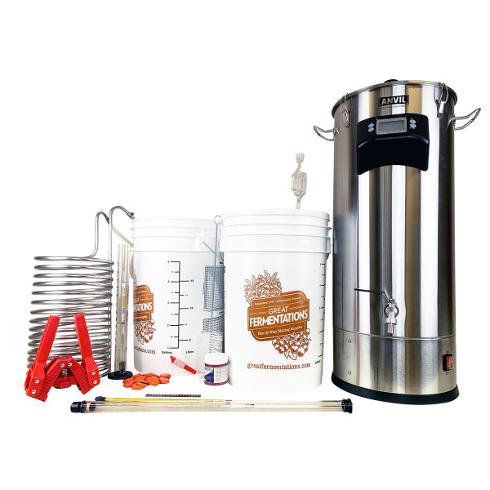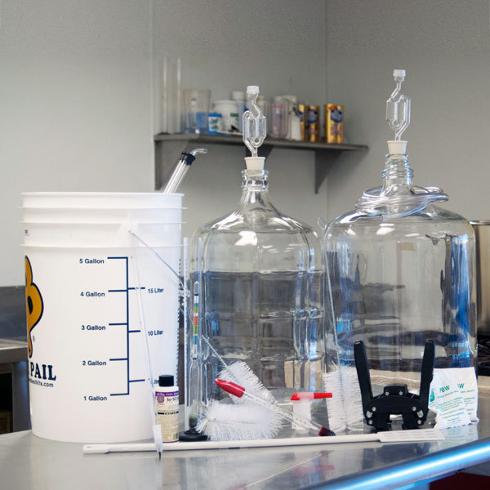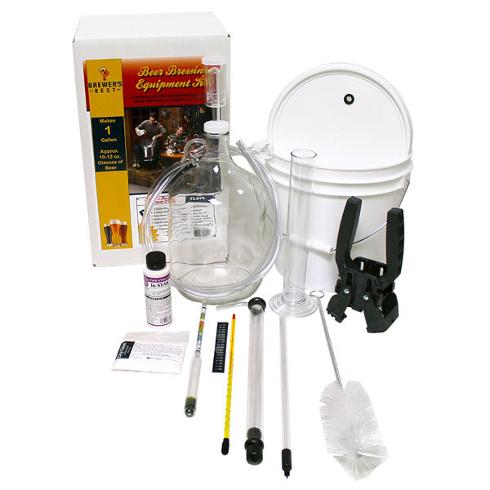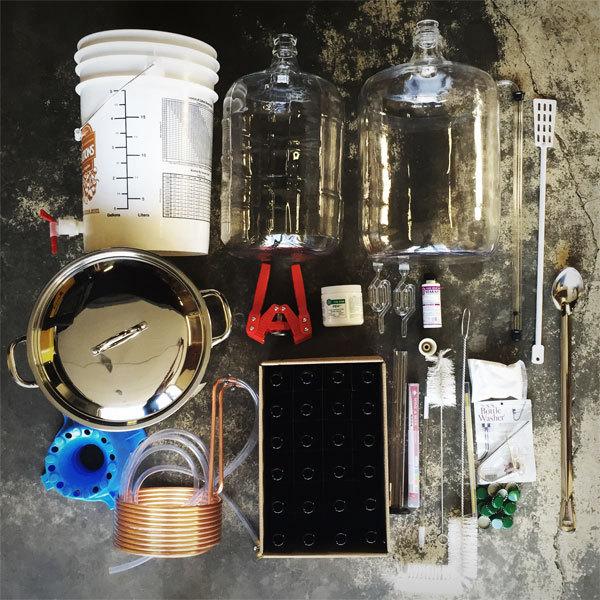This is one of the topics we tackle quite a lot at Great Fermentations. Glass vs plastic carboys: which one is better? Glass carboys are impermeable to oxygen, easy to clean, don't scratch, and lasts forever. Plastic breathes, is tough to clean, easy to scratch and wears out. Done deal then, right?
Well, it turns out that the old school thinking is running up against some new facts€”and new materials.
We're talking about modern plastic, polyethylene terephthalate (PET). PET plastic is actually a polyester compound (Dacron). Its the same stuff that went into groovy paisley shirts and clip-on ties in the 1970s! It is then sandwiched with a layer of PVOH (Polyvinyl Alcohol) plastic to block oxygen permeability€”more on that in a minute. PET plastic won't absorb odors or stain from beer or wine. It's non-porous and hydrophobic, so it won't carry over colors or flavors from one batch to the next.
Let's look at the concerns/myths about using PET plastics:
Myth 1: Plastic Breathes
PET plastic has a rate of oxygen permeability that's only slightly higher than glass. In fact, there is more oxygen exchange from the interface between the bung and the neck of a glass carboy than there is through the wall of a PET carboy!
Myth 2: Plastic is tough to clean without scratching
PET will definitely scratch, so using a rough-bristled brush is out. Yet, unlike other plastics, PET is immune to even very harsh cleaning solutions. If you've got a gooped-up carboy, soak it overnight in
PBW or similar and it will drop clean like a magic trick.
For minor cleaning, put a couple of cups of your cleaning solution in the carboy, toss in a soft cloth and roll the carboy around on the counter or floor. The weight of a wet cloth is enough, along with the cleaning solution, to scrub it completely clean. Dump it out, retrieve the cloth, rinse and you're good to go.
Myth 3: Plastic wears out
PET is non-reactive to UV light and remains pliable even in the long term. Some of the PET plastic carboys to come off the line are still in use today, after 20 years of service!
Now that we have sorted out the myths, let's also look at the clear advantages that PET plastic provides:
Advantage 1: Light Weight
A full glass carboy can weight over 60 pounds! Need we say more?
PET carboys only weigh a few ounces. This is especially nice if you're lifting it up for racking or into an awkward space. Or if you're like me, this is great if you back isn't quite what it used to be :)
Advantage 2: Durability
The biggest advantage is that PET carboys are unbreakable under normal use. Glass carboys though can shatter in various and sometimes unavoidable circumstances. Bump it the wrong way against a counter? Lift it by the neck and it has a weak spot? Heaven forbid you actually drop it, and it can shatter. Don't even get me started on the glass carboys imported from China that tend to break if you even look at them funny!
When your glass carboy does break, its not pretty. You not only lose your delicious homebrew, you're also exposed to a dangerous shower of glass. Do a google image search for "glass carboy injury" and see for yourself. The results are not pretty, and often very scary. For this reason alone, PET carboys are a great carboy.
Advantage 3: Big Neck
Getting dry hops in and out of a glass carboy that has a 6.5 bung opening is painful and frustrating. The neck of the standard PET carboy is bigger (#11 bung). The bigger opening makes it easier to add oak chips, hops, spices, or anything that needs to go into€”and come out of€”your homebrew. The
PET Fermonster Carboys are even better. They have a 4 inch opening that allows you to stick your entire arm into the carboy!
Advantage 4: Add-Ons
With a plastic carboy, you can add features to it that would otherwise be impossible with glass. Want to add a valve and spigot? No problem! Drill a small hole and install. Want a sample port that is slightly above the yeast bed at the bottom? Same thing; drill a small hole and install your valve. Glass carboys with spigots are out there, but they're expensive and rare.
Advantage 5: Storage
This advantage goes hand in hand with #1, but deserved it's own mention, and that is PET carboys are easy to store. Because they are so light, you can store it nearly anywhere it fits. They're so light it's a breeze to put them somewhere high up. And because they won't break, you don't have to take a lot of care when you stack them.
Where's the love for glass?
Now, this post may make it seem that we hate glass carboys, and nothing can be further from the truth! We still use glass carboys. They are a great choice for your homebrew; especially when it comes to long term aging. We just feel that PET carboys have some great advantages. These advantages are often overlooked because of their perceived deficiencies! Good cleaning/sanitation procedures, and a solid brewing process are still key. With those inline, you'll still make great beer regardless if you use glass or plastic.




